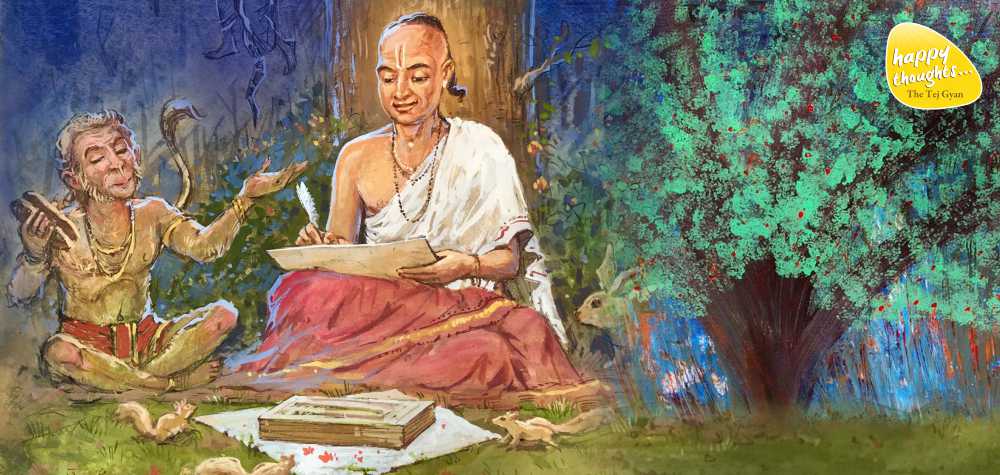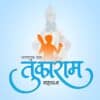
Saint Tulsidas – the Expression of Balanced Devotion
Tulsidas, the ardent devotee of Lord Rama, was a poet-saint who lived during the surge of devotion that swept across the Indian subcontinent in the medieval period. He composed many soul-stirring devotional verses in the common language of the people. It was as though he was born to spread Lord Rama’s story among the masses in the language they understood. His most prominent composition, Shri Ramcharitmaanas, is a testament to this, rousing waves of devotion among many people.
At the time, many religious institutions and monasteries were emerging across the subcontinent. However, most orthodox pandits and scholars were stooped in ego and intoxicated by power and position. The illusions of the mind existed not only in the material world but also in the so-called ‘spiritual’ world.
The devotion that helps free oneself of worldly limitations had become prey to worldly illusions. Comparisons such as ‘I am the greater devotee’ or ‘I am the greater scholar’ replaced the divine devotion with the devotion of Maya.
Amidst the corrupt leadership and exploitation by religious ritual-mongers, an intense call for deliverance from these orthodox malpractices arose in the masses. Such hope for liberation could have awakened only in the presence of true devotion. It was this need that resulted in the visitations of many saints like Tulsidas, Soordas, Meera and Chaitanya Mahaprabhu during the wave of Bhakti in the medieval period.
Tulsidas stayed away from the Maya prevalent in the world. He was immersed in the divine devotion of Lord Rama and its expression. Every devotee has a different way of expressing their bhakti. Some shape idols of god, while others compose couplets, verses and hymns in praise of god. Some meditate, while some indulge in selfless service or Seva. All forms of expression are precious; none is less or more than the other. Each performs its role to awaken hope and bhakti.
A similarity among many of the Bhakti saints was that they all expressed their devotion by composing and singing hymns, effectively spreading piety among many. It was their divine purpose – a purpose they fulfilled well.
Tulsidas was one among such saints and expressed his devotion through the medium of writing. His life’s journey began as a young orphaned boy named Rambola. When a guru entered his life and showered his blessings, he became the Tulsidas we know today. On his guru’s guidance, he entered worldly life and married Ratnawali. His wife’s great sacrifice helped him transcend the human weakness of attachment, desire and lust, and become a true devotee. When his devotion reached its peak, he became Goswami – the one who conquered all his senses.
Tulsidas or any devotee’s journey can be understood through the symbolism of an archer’s bow. When the bow is held upright, it has two corners on which the bowstring is tied. In this state, one cannot shoot an arrow and expect to hit the target. To pierce the target, the arrow needs to be positioned such that the bowstring is pulled back, forming the third corner.
Similarly, one corner of the devotee’s journey is Satya Shravan or listening to the truth and gaining knowledge from the guru, while the second is bhakti or devotion. If one does not wish to hit the target, the bow can remain this way comfortably with its two corners. But when one wishes to achieve the goal of freedom and stabilization in the Self, one needs to pull the string to form the third corner of Seva or service.
The Balance between Shravan, Seva and Bhakti
All three corners of the bow are interdependent. Any one of the three corners of Shravan, Seva or Bhakti is incomplete without the other two. Even if one remains weak, the target cannot be achieved.
Shravan (Listening to the Truth): Those whose corner of listening to the Truth is strong, but the other two weak, can grow conceited and arrogant due to their knowledge.
Bhakti (Devotion): For those simply sitting in devotion, there exists neither the right understanding nor any action or service based on that devotion. Such bhakti is futile where the devotee escapes responsibilities and gets stuck in religious superstitions.
Seva (Service): Without the right devotion or knowledge of the Truth, action cannot become service since it would not be selfless.
The Balance: Devotion humbles the wise and eradicates their ego. Knowledge of the Truth or Satya Shravan ensures that the same devotion has the right direction. The third corner of service plays an important role, especially for those who are lethargic, who procrastinate when it comes to responsibilities and become lazy in the name of devotion. True bhakti is when it is expressed in the form of selfless service. This way, Bhakti, Shravan and Seva balance the mind’s tendencies and illusions.
Service terminates laziness or tamas. Devotion ends restlessness or rajas because it forces one to sit peacefully, chant God’s name and meditate instead of chasing work endlessly. Listening to the Truth eradicates the ego of the one who is balanced or possesses Sattva. Otherwise, the balanced one develops an ego boosted by his virtues, noble deeds and intellect. The right knowledge of the Truth keeps him away from such ego.
One who can yield the bow and balance the three corners becomes a Goswami like Tulsidas. Along his journey, Tulsidas first strengthened the corner of knowledge through Satya Shravan and then developed the corner of Bhakti. When his devotion reached its peak, he aimed for the third corner of Seva.
Through him, the world has seen great selfless service. His many devotional compositions served to light the torch of devotion, reaching numerous generations. His life’s goals of ‘devotion, service and liberation’ were attained and the world was blessed with many precious texts. On his birth anniversary, let us learn to strike the right balance in our lives and maintain the three corners of the bow until we attain our goal.


















Add comment